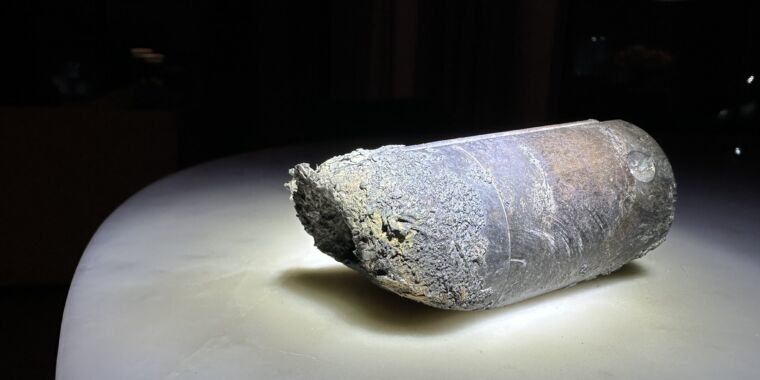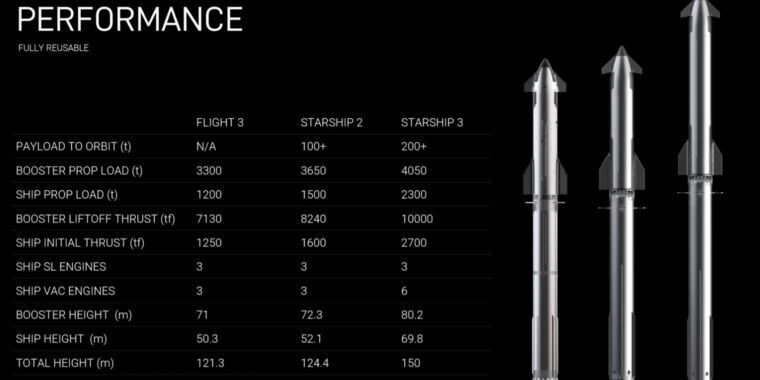And it did again.

Still alive! Japan's SLIM moon lander survives its 2nd lunar night (photo)
SLIM continues to buck the odds.
And it did again.

SLIM continues to buck the odds.
And it did again.
Splendid. Hopefully with this as a demonstration case, future designs will improve.
It always seemed to be a bit of a waste to go to all that trouble to land a probe that would only work for a few days…
They say they measured an increase in thrust… but that’s almost certainly just due to the extra propellant. Injecting stuff into hot exhaust increases thrust–that’s not a surprise. The trick is to do it while increasing specific impulse.
Indeed.
Maybe the Air Force missed a trick by not calling their aircraft powered by a water-injected Pratt & Whitney J57 engine “fusion powered”. I’m sure someone could have come up with some exotic physics to hand-wave it.
that was b/c it already was categorized as steam-engine
It always seemed to be a bit of a waste to go to all that trouble to land a probe that would only work for a few days…
Obviously, the way to make space probes last longer is to have them land upside down…
Wombat pouches are rear-facing
Wow, thank you. I thought all marsupials were forward facing.
Another useless but interesting fact to cram into my memory.
Hey, remember those batteries that got ejected from the ISS? They might have caused some damage:


NASA collected the item to confirm whether it came from the International Space Station.
Of course, this is Florida. Space debris is hardly the worst thing they’re exposed to.
Space debris is hardly the worst thing they’re exposed to.
Yeah, Florida Man is right next door. ![]()
FTR, I live in Greater Miami. Florida Man is everywhere; including [whisper] right behind you! [/whisper]
I like the idea in McDowell’s cited Xit that the flying time between Cancun-ish and Ft. Myers is 2 minutes. Talk about makin’ good time. Wow! ![]()
FTR, I live in Greater Miami.
A move up from Worse Miami?
I know you’re kidding …
Like any major urban area there’s the average, the nice, the tres snootáy, the tolerable, and the flat horrid. The odd shape and history of the whole metroblob produces some odd juxtapositions between the categories.
I’ll suggest the antonym of “Greater Miami” is “Lesser Miami”.
I’ll suggest the antonym of “Greater Miami” is “Lesser Miami”.
Completely off topic, but rural England is full of town names like this.
etc. Ficticious, and inspired by Bill Bryson, but you get the point.
OH, on examination, there really IS a ‘Little Piddle’!
‘https://historicengland.org.uk/listing/the-list/list-entry/1019410’
Lesser Miami
Mehami
The latest Mars fantasies from Elon:

"These are unthinkable numbers, but we’re not breaking any physics to achieve this."
A big question is the scientific value of manned vs unmanned space flight. The U.S. spends a lot of money on Artemis and it crowds out unmanned space activities. [Obviously both have value; the question is which has the most bang for the buck.]
The latest example of this is the Chandra X-ray space telescope which will be unfunded in a very few years:

Astronomers might face layoffs, a key observatory might be forced to shut down and precious cosmic details might start to fade from view.

NASA says that increasing management costs means it cannot afford to the keep the “great observatory” operational
NASA budget woes could doom $2 billion Chandra space telescope [Washington Post]
Voyager 1 resumes sending info:

After some inventive sleuthing, the mission team can — for the first time in five months — check the health and status of the most distant human-made object in existence.
Brian
Voyager 1 resumes sending info:
These are the unsung heroes of science. Little to no fanfare, just miraculous solutions to impossible problems from 24.3B km away (162.6AU!).
If Starship achieves its goal of routine and comparatively cheap space launch, would that relieve some of the financial pressure on space missions? Or is their cost mainly determined by how expensive they are to build and operate, with launch cost a minor factor? Would two less-capable but cheaper to build packages return the science more economically than one all-or-nothing mission if launch was less of an issue?
Fantastic!
Or is their cost mainly determined by how expensive they are to build and operate, with launch cost a minor factor?
It’s difficult to know right now since for the past 60 years of so, launch has been exquisitely expensive and so the payloads have been expensive to match. With few exceptions, no one has tried to make cheap payloads.
Cubesats are one partial exception, though they’re mainly cheap because they’re small and don’t do much rather than really improving the state of the art in satellite manufacturing (they’re probably more expensive per kg than typical commercial sats all told).
SpaceX themselves would be the main exception with Starlink. They’re the first to truly mass-produce satellites, and use a number of techniques to reduce cost. For example, instead of expensive Spectrolab solar cells, they use commercial grade ones. They lose a few percent efficiency but are probably 1/20 the cost. They also use argon instead of xenon for their electric thruster. Again, they lose some efficiency… but argon is basically free compared to xenon.
When we see other manufacturers taking the same attitude here, we’ll be able to reevaluate how much of these costs are really inherent. I don’t think this sort of optimization will help one-shot missions very much. But maybe we can have a common platform that sacrifices performance but enables manufacturing at a greater scale.